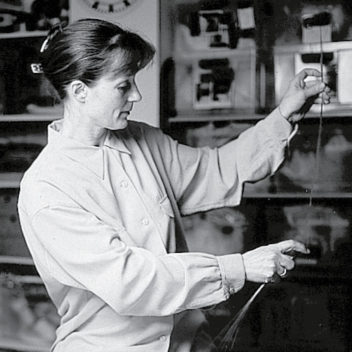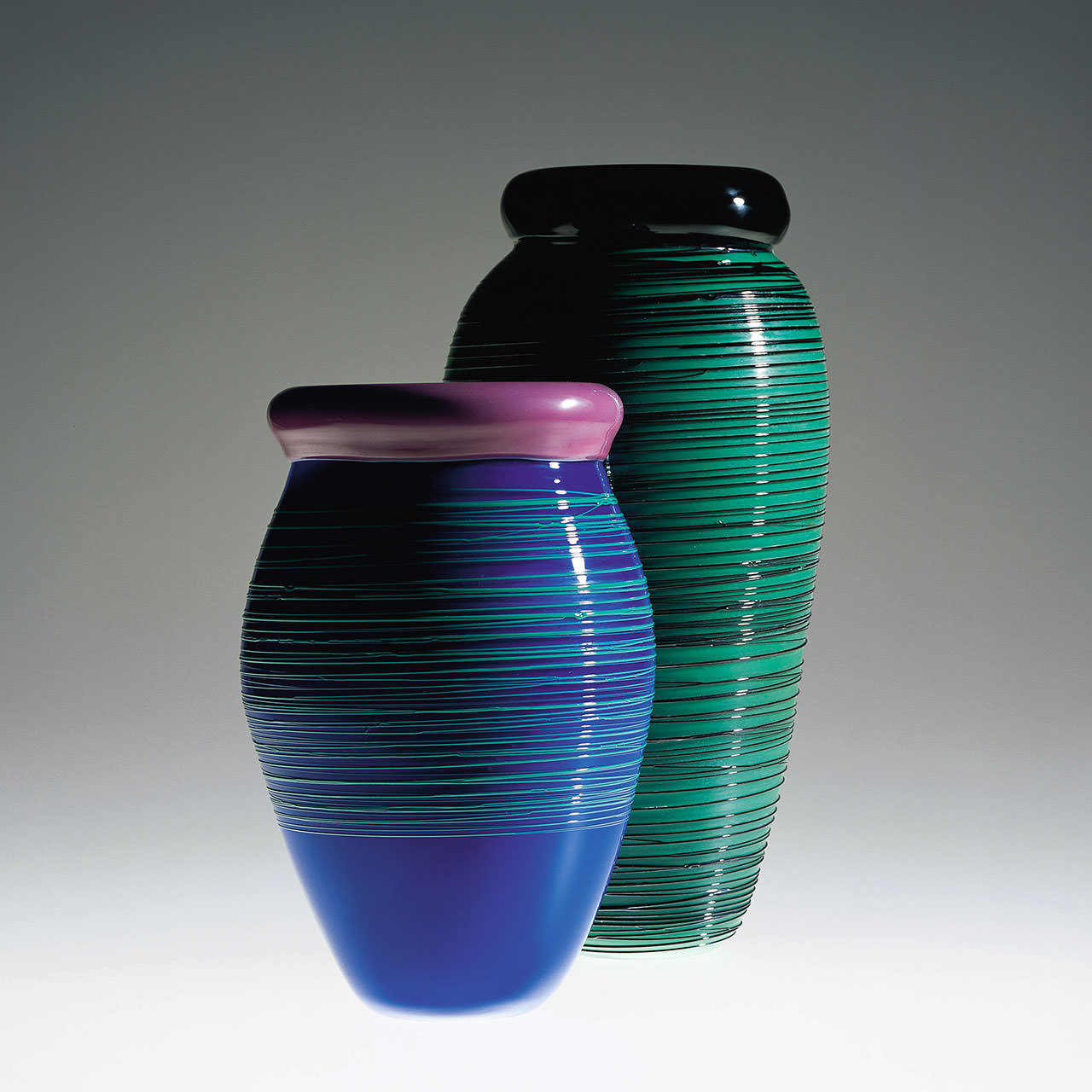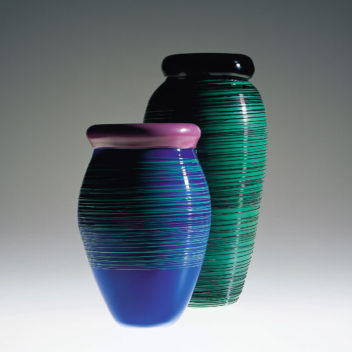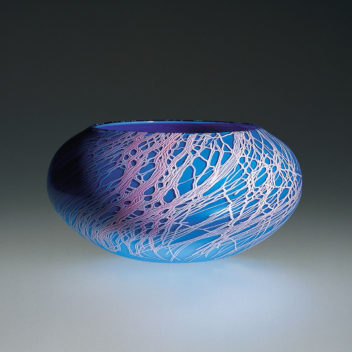Mary Ann Zynsky ChiacchereVenini & C., 1984
Two vases called Chiacchere but also known as Mulinello. The one on the left is composed of pink glass cased in blue with a pink mouth and applied green threads. The one on the right is in black glass cased in green with a black mouth and applied black threads.
Engraved: Zinsky x Venini 1984.
10 in. high (25.4 cm)
14 in. high (35.5 cm)
Exhibitions:
2000, New York, Venetian Glass, Museum of Arts & Design;
2001, Milan, Murano: Vetri dalla Collezione Olnick Spanu, Spazio Oberdan.
Bibliography and comparative texts:
G. Duplani Tucci, 1989, n. 67;
R. Barovier Mentasti, 1992, n. 163;
Glas Band II, 1992, p. 128;
A. Venini Diaz de Santillana, 1996, n. 263;
A. Venini Diaz de Santillana, 2000, n. 270; Olnick Spanu, 2000, n. 153;
Olnick Spanu, 2001, n. 192.
A turquoise bowl cased in lattimo glass decorated with a random design of pink and pale blue threads.
Engraved: Zinsky x Venini 1984.
7 1/4 in. high (18.5 cm)
Bibliography and comparative texts:
R. Linzeler, 1922, p. 666;
C. Carrà , 1923, p. 67;
R. Linzeler, 1923, p. 83;
R. Papini, 1930, n. 570;
G. Mariacher, 1967, p. 98;
R. Barovier Mentasti, 1982, n. 252;
Mille anni…, 1982, n. 503;
F. Deboni, 1984, p. n. 70;
W. Neuwirth, 1987, nn. 7, 104;
A. Dorigato, 1986,
p. 71;
F. Deboni, 1989, n. 1;
L’arte del vetro, 1982, n. 307;
M. Heiremans, 1993, n. 191;
M. Barovier, R. Barovier Mentasti,
A. Dorigato, 1995, n. 15;
A. Venini Diaz de Santillana, 1996, n. 1;
R. Barovier Mentasti, 1998, n. 25;
A. Venini Diaz de Santillana, 2000, n. 1;
Olnick Spanu, 2000, n. 8;
Olnick Spanu, 2001, n. 13.
A green vase decorated with a random design of orange threads.
Engraved: Zinsky x Venini 1984.
12 1/2 in. high (31.5 cm)
Bibliography and comparative texts:
R. Linzeler, 1922, p. 666;
C. Carrà , 1923, p. 67;
R. Linzeler, 1923, p. 83;
R. Papini, 1930, n. 570;
G. Mariacher, 1967, p. 98;
R. Barovier Mentasti, 1982, n. 252;
Mille anni…, 1982, n. 503;
F. Deboni, 1984, p. n. 70;
W. Neuwirth, 1987, nn. 7, 104;
A. Dorigato, 1986,
p. 71;
F. Deboni, 1989, n. 1;
L’arte del vetro, 1982, n. 307;
M. Heiremans, 1993, n. 191;
M. Barovier, R. Barovier Mentasti,
A. Dorigato, 1995, n. 15;
A. Venini Diaz de Santillana, 1996, n. 1;
R. Barovier Mentasti, 1998, n. 25;
A. Venini Diaz de Santillana, 2000, n. 1;
Olnick Spanu, 2000, n. 8;
Olnick Spanu, 2001, n. 13.





